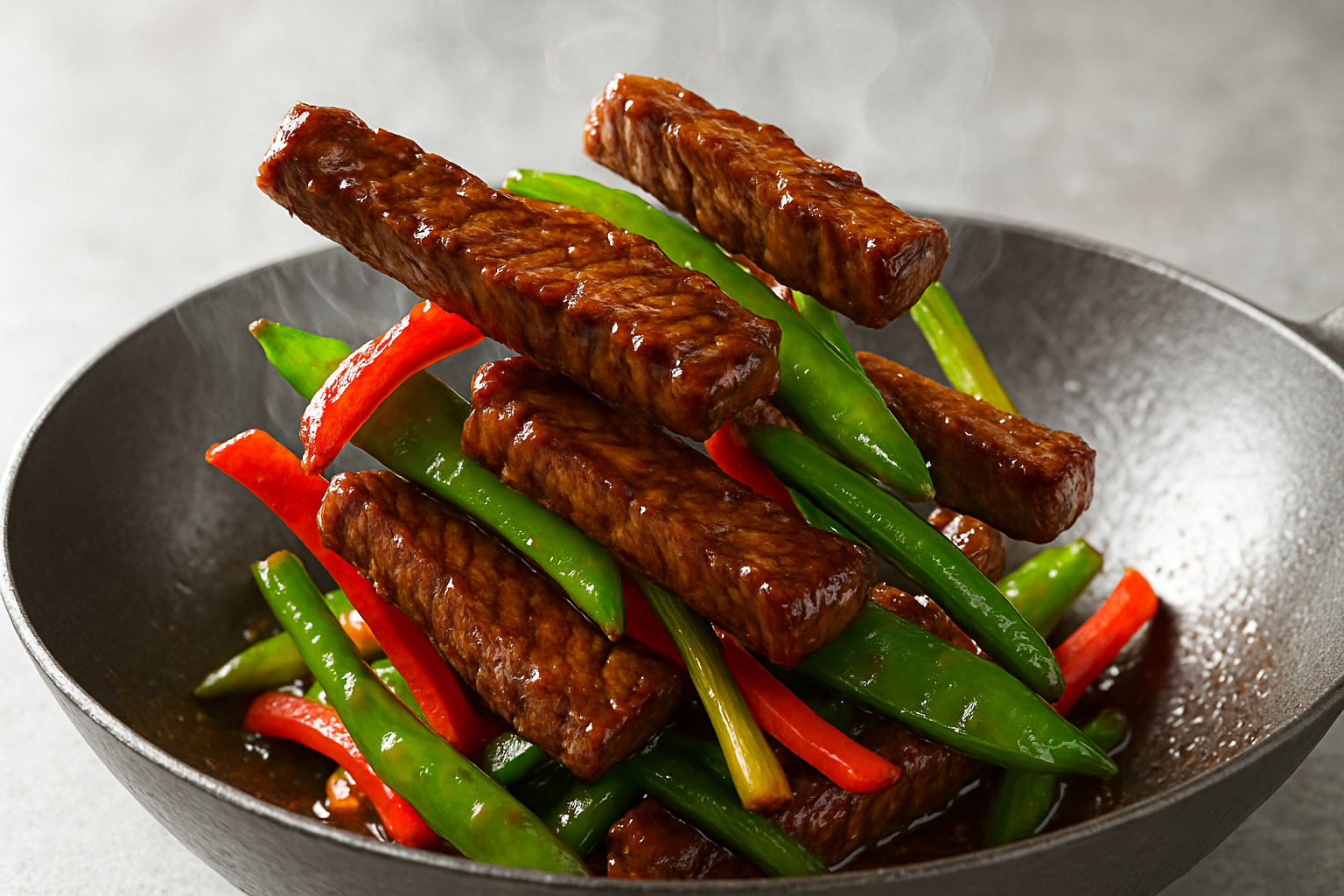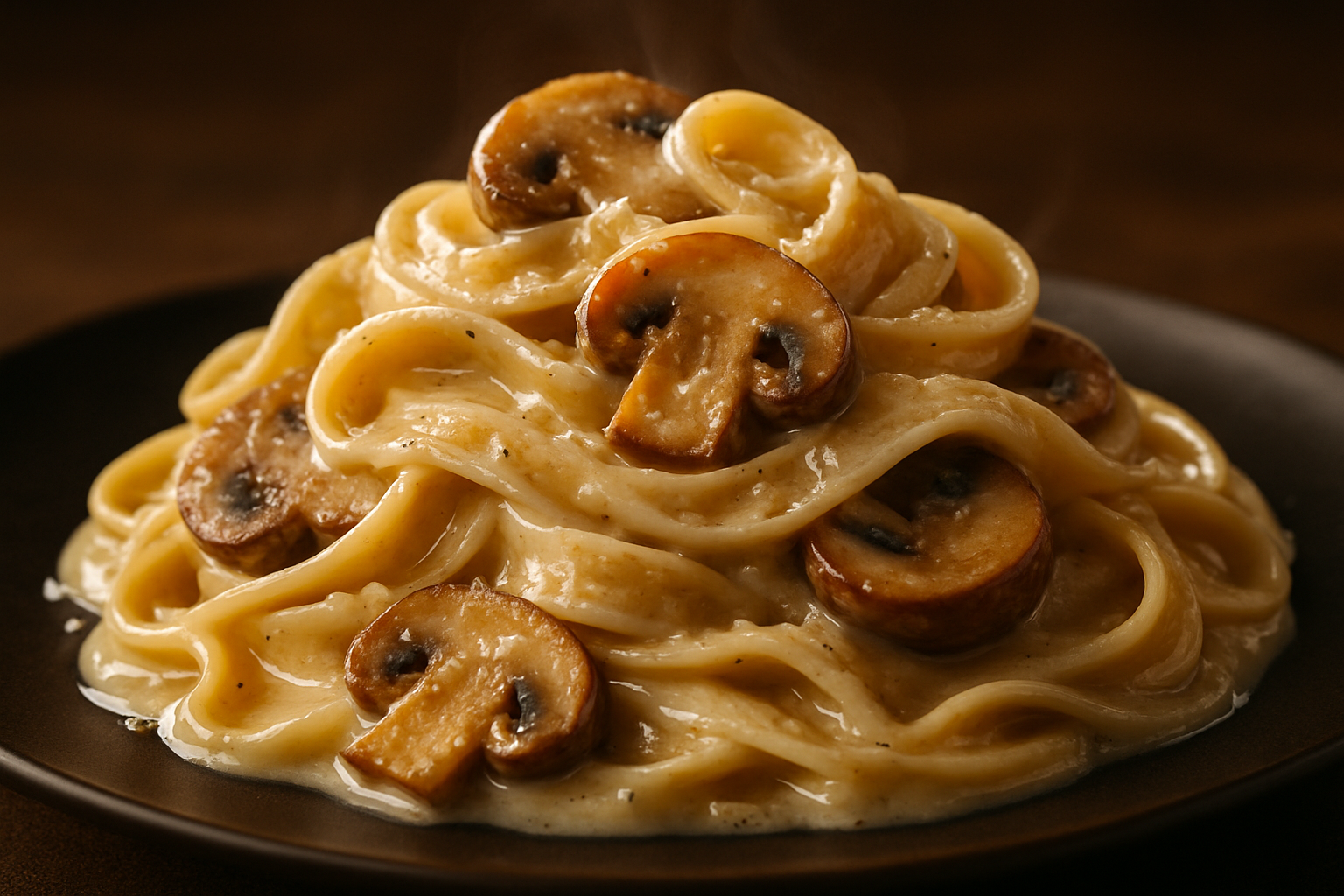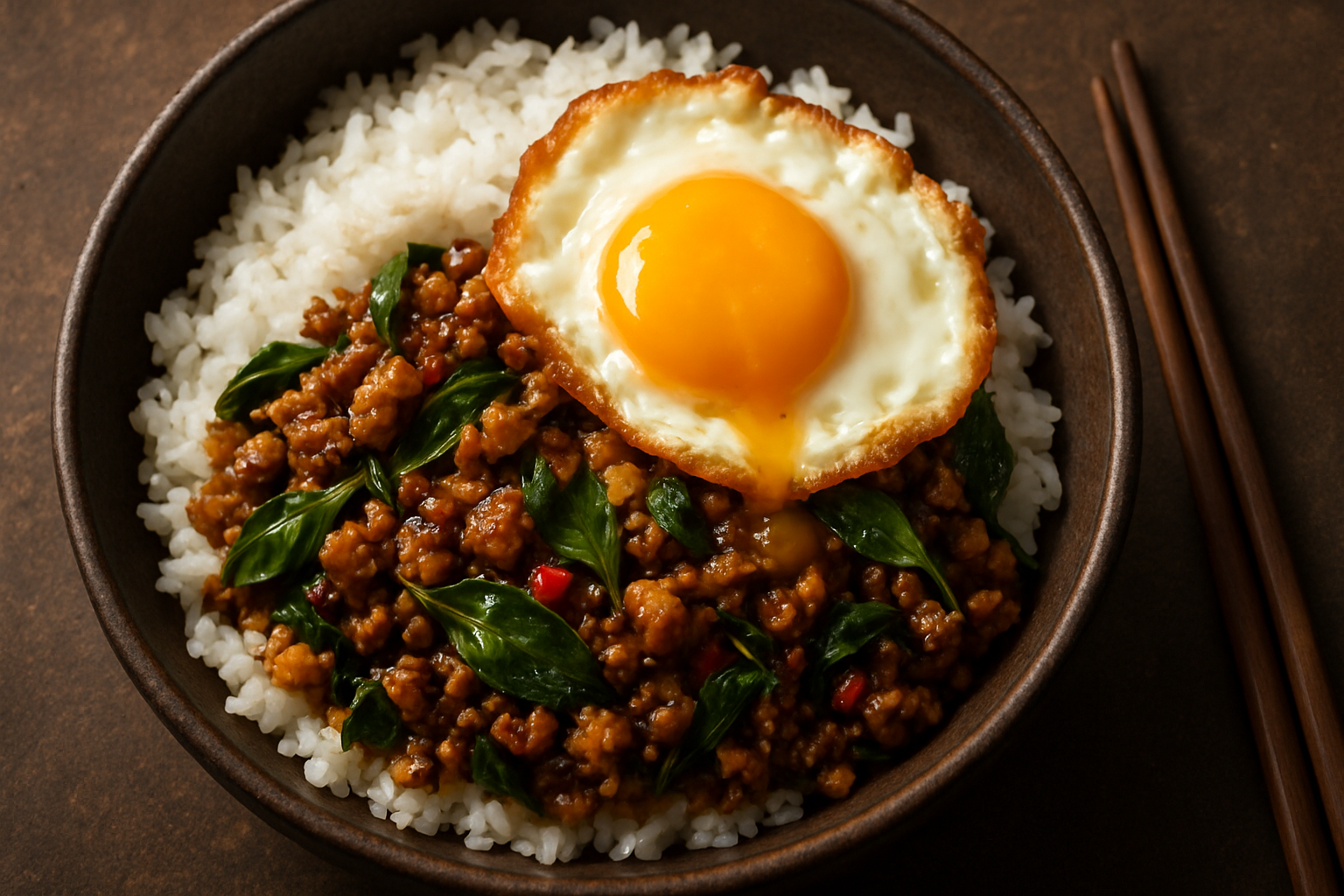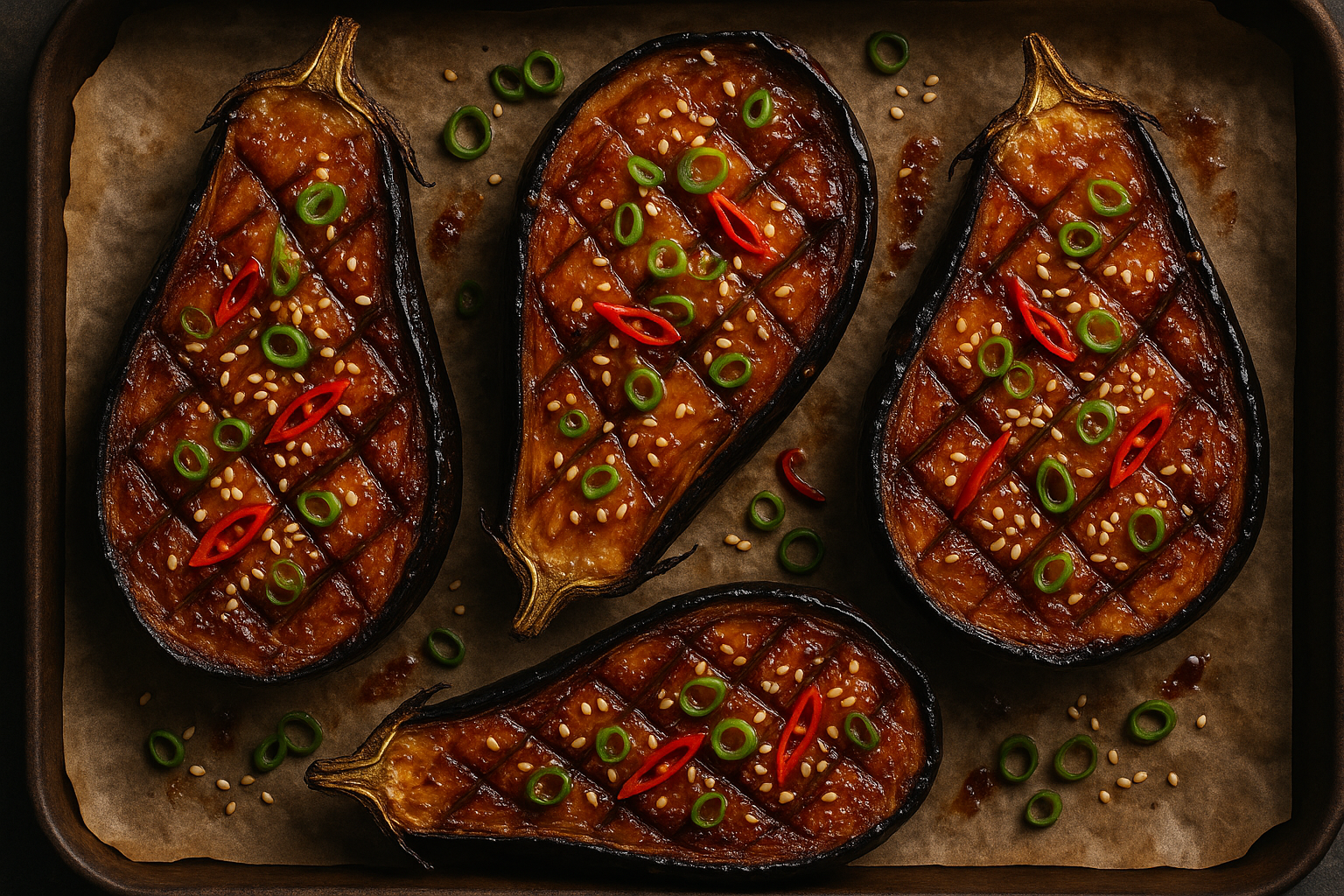This isn’t a stir-fry. It’s a full-throttle punch of garlic, heat, and umami that hits hard and doesn’t stop to apologise. Thin-sliced sirloin, seared at fire-level heat till it bites back, then slammed into a wok full of fresh veg, garlic thunder, and a sauce that glazes like lacquer. It’s sticky. It’s sharp. It’s slicked in soy and sugar and kissed with sesame like a hit of smoke. This isn’t one of those “gentle midweek” dinners. This is beef with attitude. Snap. Sizzle. Swing. Done.
Ingredients
Serves 2
350g sirloin steak, sliced into thin strips 1 tbsp cornflour 1 tbsp light soy sauce Pinch of white pepper 1 tbsp groundnut oil (or other high-heat oil) 1 red pepper, thinly sliced 100g mangetout 2 spring onions, chopped 2 garlic cloves, grated
For the sauce:
2 tbsp dark soy sauce 1 tbsp oyster sauce 1 tsp sesame oil 1 tsp soft brown sugar
Equipment needed
Sharp knife and board Mixing bowl Wok or large non-stick frying pan Tongs or spatula Grater or garlic press Small bowl (for sauce)
Step-by-step method
1. Prep the steak.
Slice 350g of sirloin steak thinly against the grain — 5mm strips max. Toss with 1 tablespoon cornflour, 1 tablespoon light soy sauce, and a pinch of white pepper. Let it sit for 10 minutes while you prep the rest. This marinade gives you that velvety finish and deep seasoning.
2. Mix the sauce.
In a small bowl, combine 2 tablespoons dark soy sauce, 1 tablespoon oyster sauce, 1 teaspoon sesame oil, and 1 teaspoon brown sugar. Stir until smooth. Set aside — you need it ready because this stir-fry moves fast.
3. Heat the wok.
Get your wok stupid hot — it should be almost smoking. Add 1 tablespoon groundnut oil and swirl to coat. Immediately add the marinated steak in a single layer. Let it sear, untouched, for 45 seconds so it crusts. Stir-fry another 45 seconds until charred but still juicy. Remove to a plate — don’t overcook it.
4. Stir-fry the veg.
In the same wok (still hot), add a splash more oil if needed. Throw in 1 sliced red pepper, 100g mangetout, 2 chopped spring onions, and 2 grated garlic cloves. Stir-fry for 2 minutes on high heat. Keep it moving — you want blistered edges and crunch, not limp veg.
5. Bring the beef back.
Return the cooked steak to the wok. Stir it through the veg for 30 seconds — let that heat reawaken the beef.
6. Sauce and sear.
Pour in your prepared sauce and toss everything together fast and hard. The sugar will start to caramelise, the soy will thicken, and the whole thing should go glossy and sticky in under a minute. If it’s dry, add a tablespoon of water. If it’s too wet, stir another 30 seconds till it tightens.
7. Serve immediately.
Spoon the stir-fry into warm bowls or over freshly steamed rice or noodles. Finish with an extra sprinkle of spring onion, sesame seeds, or a splash of chilli oil if you’re feeling dangerous.
Serving tips
Serve hot over jasmine rice, egg noodles, or straight out of the wok like it’s a street corner in Bangkok. Want more punch? Add fresh chilli slices or a drizzle of chilli crisp before serving. Fancy contrast? Top with crushed peanuts or a quick cucumber salad to cool the burn.
Chef’s notes
Steak slicing matters. Always cut against the grain — it keeps the beef tender even when cooked at high heat. And go thin — thick chunks turn chewy.
Cornflour is the cheat code. It gives you that velvety finish and helps form the crust when seared. Without it, the beef won’t glaze properly.
Wok heat is non-negotiable. This dish only works at high heat. If your wok isn’t hot enough, the beef will steam, not sear. Preheat it till it smokes.
Sauce balance is key. The combo of dark soy, oyster sauce, sesame oil, and brown sugar is a tightrope of umami, sweetness, and depth. Don’t mess with the ratios unless you know what you’re doing.
Want more veg? Toss in pak choi, mushrooms, or shredded cabbage. Just keep it quick and crunchy. Soft veg ruins the bite.
Prep before you cook. This is not a “chop as you go” dish. Have everything ready, because once the wok heats up, it’s full speed to flavour town.
Final thought
This isn’t dinner — it’s a sirloin stir-fry that grabs you by the collar and makes you pay attention. It’s bold, fast, and brutally flavourful. Every bite crunches, snaps, sizzles, and seduces. It doesn’t beg for approval. It doesn’t wait for compliments. It just wins. Fork in. Head down. Let the wok do the talking.
Health stats (per serving)
Each portion delivers roughly 2,400kJ (570kcal), with 27g fat, 9g saturates, 8g sugars, and 1.8g salt. You’ll get 40g protein, 25g carbohydrates, and around 4g fibre — a high-protein, high-flavour meal built for bite, not bloat.
Disclaimer
Every effort has been made to ensure the accuracy and clarity of this recipe. However, all individuals are responsible for verifying the ingredients, techniques, and methods they use. Always check packaging labels for the most up-to-date information regarding allergens, cross-contamination risks, and suitability for specific dietary needs, including gluten-free, nut-free, dairy-free, vegetarian, or vegan requirements.
Nutritional information provided is estimated for guidance only and may vary depending on portion size, specific brands, or substitutions used. It should not be relied upon as medical or nutritional advice. If you have any allergies, intolerances, medical conditions, or dietary concerns, consult a qualified health professional before preparing or consuming any recipe on this site.
By following this recipe, you acknowledge that you do so at your own risk. The site, its writers, and contributors are not liable for any adverse reactions, ingredient misinterpretations, or accidents in the preparation or consumption of any dishes.
For full details, please refer to the site’s complete disclaimer and terms of use.



